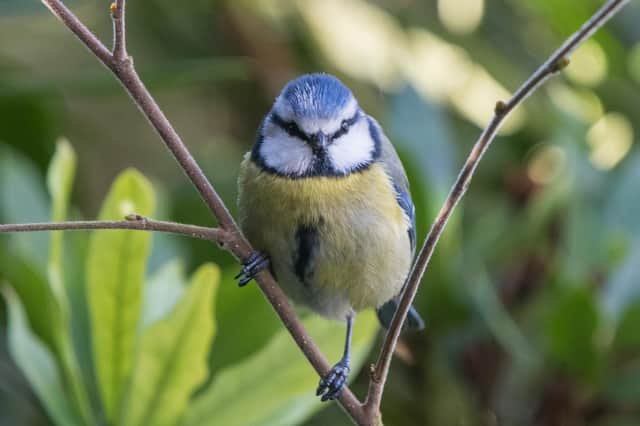NATURE NOTES: Garden birds with attitude


Both have real personality and reward those who watch them closely.
Firstly, the ever-feisty blue tit. At many feeders, if any other bird is present and they see a blue tit
Advertisement
Hide AdAdvertisement
Hide Adcoming, they make a swift exit while the blue tit hogs the feeder. Bird ringers will often testify to these bundles of yellow and olive-green fluff being the fiercest garden bird – given half a chance, in the hand their beaks will draw blood. In contrast, greenfinches have been known to swiftly drift to sleep and never wake up again – make of that what you will. That lovely blue patch on the blue tit’s head is even snazzier than you might first believe – the male ‘beret’ at this time of year is slightly brighter than that of the female, even to our eye but to the female bird, the male’s patch glows as they can see u.v. light.
Yes, like most birds at the feeder they’ll be keeping their eyes out for sparrowhawks, cats and humans, but they tend to stick around the longest and are a lot less flighty than other birds, even if the other birds have fled the feeder. They work hard for their dinner with good reason – the known record for the number of chicks for one pair last time I looked was 63. Each chick needs around 100 caterpillars a day, so all you harried parents now know there’s someone worse off than you. If you’re having a problem with large white caterpillars in your garden your blue tits will be hoovering them up so at worst, though it’s a bit mean, you could put any you large white caterpillars you find on a raised feeder for the blue tits. These tits take readily to nest boxes, too, or jazzier ones with cameras – and like all wildlife they thrive in an untidy garden. Without putting too fine a point on it, decking or artificial grass are abominations in terms of sustainability and wildlife repellents to boot. It may be easier to maintain some plastic for a thousand years or more, but the lazy gardener is rewarded with more wildlife. On to the jackdaw – what a flipping handsome bird. You can separate them from crows in several ways – a stunning, silvery-grey head and extremely piercing, beady grey eye which pierces your soul.
The sound of a jackdaw is the sound of a corvid agreeing with itself in as many tones as possible. Yes.
Yes? In short, sharp bursts. Like most crows they are extremely vocal and gregarious – I’m lucky enough to have a roost near me just outside Whittingham and on autumn evenings, seeing them fly silently in groups to the roost then hearing them have a noisy cackle about their day-time travels is an evening highlight.
Advertisement
Hide AdAdvertisement
Hide AdMost windy days jackdaws will be seen floating on the wind, and there is no question they do it for fun and perhaps for a bit of flying practice. I was really pleased to see a pair in my garden this week not causing mischief by tipping fruity nibbles everywhere for once. They pair for life so obviously a big old strut in a garden with a fruity nibble or two is the height of romance for them. Add a ‘r’ to your covid quarantine by putting out some treats for them on the ground like the aforementioned nibbles – they are great to watch but you’ll also be distracting them from the prime little-bird feeder.
If you’re not lucky enough to have a garden, keep looking for birds on your daily exercise, and for blue tits, you can get window feeders.